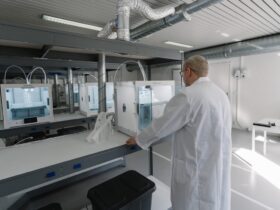Creating a Development Environment on Linux
Are you ready to take your coding skills to the next level? Whether you’re an experienced developer or just starting out, setting up a powerful development environment on Linux can significantly boost your productivity and enhance your coding experience. In this blog post, we’ll guide you through the process of creating a robust and efficient development environment on a Linux system. From installing essential tools to optimizing your workflow, we’ve got you covered!
Understanding the Need for a Development Environment
Before we delve into the nitty-gritty details of setting up a development environment, it’s essential to understand the significance of having a well-structured workspace. Did you know that 69% of developers believe that having a standardized development environment across their team leads to higher productivity and better code quality? This statistic underscores the importance of creating a cohesive and efficient development environment that can streamline your coding tasks and collaborative efforts.
Essential Tools for Your Development Environment
Version Control Systems
One of the fundamental components of a solid development environment is a version control system. Git, a distributed version control system, has gained immense popularity in the developer community. In fact, over 90% of developers use Git as their version control system of choice. Installing Git on your Linux system is a breeze and sets the stage for effective collaboration and code management.
Integrated Development Environments (IDEs)
IDEs bring together essential tools for coding, debugging, and project management into a single, integrated experience. Whether you prefer the flexibility of Visual Studio Code, the robust features of IntelliJ IDEA, or the simplicity of Sublime Text, there’s an IDE to suit your workflow. With 72% of developers using an IDE as their primary coding environment, it’s clear that an efficient IDE is a game-changer for developers.
Package Managers
Package managers such as APT, YUM, and Snap play a critical role in simplifying the installation and management of software packages on Linux. These tools streamline the process of acquiring libraries, dependencies, and development frameworks, enabling you to focus on writing code rather than wrestling with installations.
Customizing Your Development Environment
Now that you’ve equipped your Linux system with essential tools, it’s time to customize your environment to align with your preferences and workflow.
Shell Customization
Customizing your shell, whether it’s Bash, Zsh, or Fish, can significantly enhance your efficiency and comfort while working in the command line. From configuring custom prompts to leveraging powerful plugins, tailoring your shell environment can transform your terminal into a productivity powerhouse.
Workspace Organization
Maintaining a well-organized workspace is key to maximizing your productivity. Creating separate directories for different projects, establishing clear naming conventions, and employing effective file management practices can streamline your workflow and make it easier to navigate and locate project files.
Enhancing Productivity with Automation and Scripting
Scripting with Bash and Python
Harnessing the power of scripting languages like Bash and Python can automate routine tasks, simplify complex operations, and expedite repetitive processes. Whether it’s writing shell scripts to streamline deployment procedures or creating Python scripts for data processing, incorporating automation into your development environment can save time and reduce the likelihood of errors.
Task Automation with Cron Jobs
Cron, a time-based job scheduler in Unix-like operating systems, enables you to automate recurring tasks at predetermined intervals. From scheduling backups and system maintenance activities to running periodic data processing scripts, leveraging cron jobs can offload routine responsibilities and free up your time for more creative and impactful work.
Applying Your Development Environment in Daily Practice
Now that you’ve gained insights into the key elements of a robust development environment, it’s time to put these concepts into action in your daily coding endeavors.
Install and Configure Key Tools
Begin by installing Git, your preferred IDE, and relevant package managers on your Linux system. Take the time to explore customization options for each tool and tailor them to best match your workflow and preferences.
Embrace Automation
Identify repetitive tasks in your development workflow and start automating them using scripting languages like Bash and Python. Look for opportunities to streamline routine processes and reduce manual intervention.
Adopt Best Practices for Workspace Organization
Implement a systematic approach to organizing your coding projects. Create dedicated directories for each project, establish a consistent naming convention, and maintain well-structured file hierarchies for easy navigation and retrieval of code and resources.
Collaborate and Seek Feedback
If you’re part of a team, encourage the adoption of standardized development environments and tools to foster seamless collaboration. Emphasize the benefits of consistency and share the productivity gains that can be achieved through a unified workspace.
In Conclusion
Creating a robust development environment on Linux is a pivotal step towards elevating your coding experience and productivity. By installing essential tools, customizing your environment, and embracing automation, you can streamline your workflow and focus on what matters most—writing high-quality code and building exceptional software. With the right development environment in place, you’re well on your way to unlocking your full potential as a developer. So, roll up your sleeves, dive into the world of Linux development, and witness the transformative power of a tailored workspace!
















